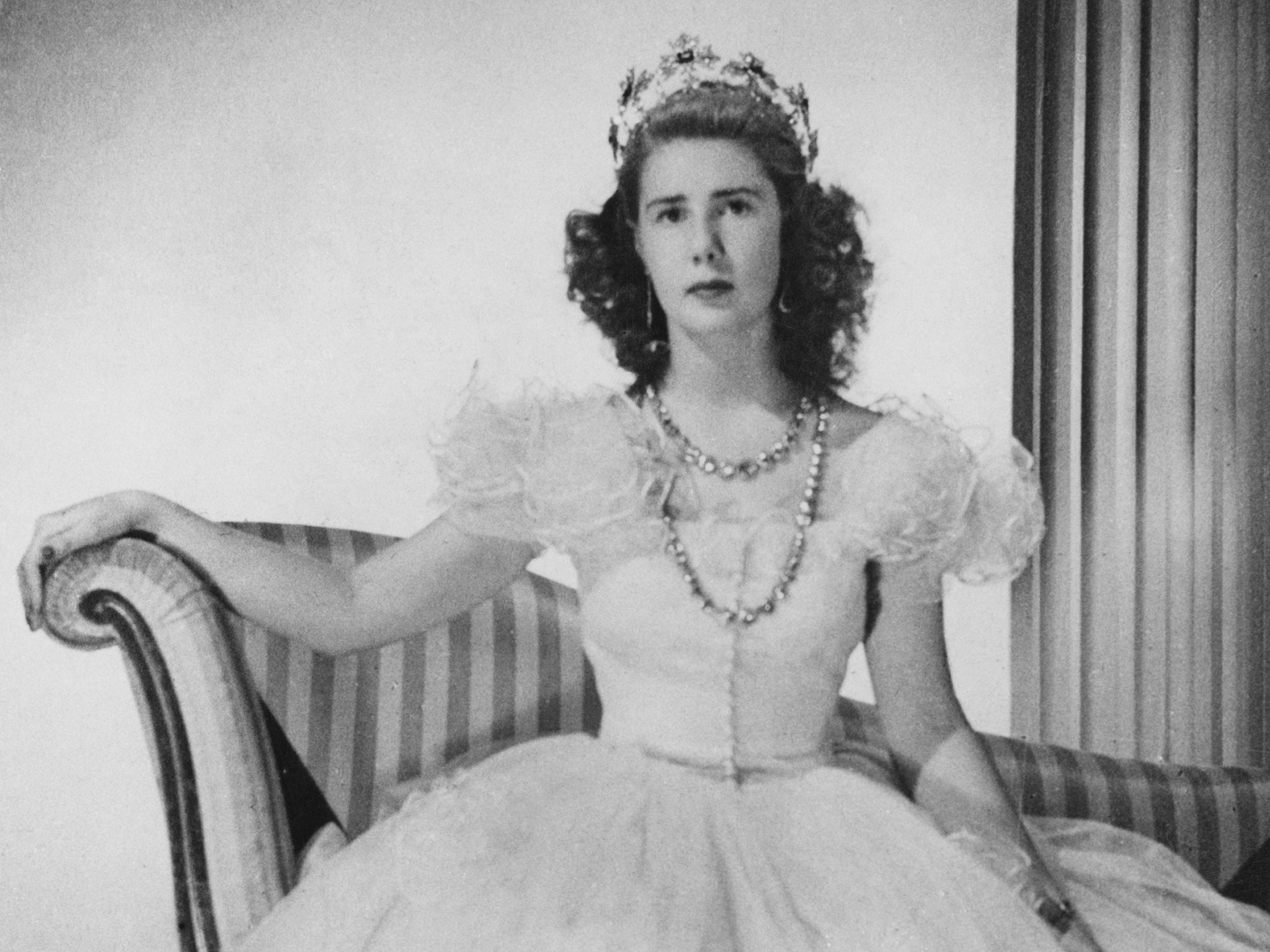The Duchess of Alba: Flamboyant aristocrat, the world's most ennobled person, who scandalised Spain with her marriages to younger men

Maria del Rosario Cayetana Fitz-James Stuart, known in Spain simply as “Cayetana”, was the world’s most titled noble, with 57 titles to her name.
The 18th Duchess of Alba was also Spain’s richest woman, with an estimated wealth of some 3 billion Euros. It was said that she could traverse Spain from north to south without leaving her estates.
With her frizzy hair and squeaky voice she was flamboyant both in her behaviour and her dress sense, attracting attention from the public and Spanish media wherever she appeared.
Born at Liria Palace in Madrid in 1926, she was the only child of Jacobo Fitz-James Stuart, the 17th Duke of Alba – a direct descendant of James FitzJames, Duke of Berwick, the illegitimate son of King James II and Arabella Churchill, making the Duchess a distant relative of Sir Winston Churchill and Diana, Princess of Wales. Her mother, Maria del Rosario de Silva, died from tuberculosis in 1934. Her godmother was Queen Victoria Eugenia of Spain.
On the outbreak of the Civil War, the family fled to Paris and thence to London, where her father became General Franco’s representative. He continued as the ambassador in 1939, when the Franco government was recognised by Neville Chamberlain.
Cayetana married the aristocrat Luis Martínez de Irujo y Artázcoz, son of the Duke of Sotomayor, in October 1947 at Spain’s last great feudal wedding – and the most costly, with expenses estimated at 20 million pesetas. The couple entertained 2,500 guests at a champagne reception and dinner at the Palacio de Dueñas in Seville; such was the public’s fascination that the event even overshadowed the arrangements for the wedding of Queen Elizabeth a month later.
When her father died in 1953, Cayetana inherited his array of titles including 18 times countess, 14 times a grandee and five times a duchess. She also took on his estates, the jewel of which is the Liria Palace, which had been destroyed during the Civil War, and continued the task of rebuilding it. The palace is now home to much of the family’s vast art collection, with paintings by Goya, Rubens, Renoir and Picasso. Literary gems housed there include a 1605 first edition of Cervantes’ Don Quixote, Columbus’s logbook, with his first map of America, and the last will and testament of Ferdinand the Catholic, father of Catherine of Aragon.
Over the following decades she played host to stars such as Audrey Hepburn, Grace Kelly and Jackie Kennedy. As well as renovating the palace, from the mid-1970s and following Franco’s death she rehabilitated the public perception of the Spanish aristocracy. Carefully managing her press coverage, she was able to replace the image of a stuffy dynasty of old-money aristocrats with the face of a modern, bohemian woman, leading a family of benefactors and celebrities. In a country where the royal family is off-limits to the media, Cayetana and her clan provided the public with the stories and gossip they demanded.
Her second husband was Jesus Aguirre y Ortiz de Zarate, an intellectual, former priest and Cayetana’s confessor. High society was scandalised by this marriage, in 1978, to a man 11 years younger than her, who had been born outside wedlock. He died of cancer in 2001.
Her third marriage in 2011 to Alfonso Diez, a civil servant more than 20 years her junior, brought more controversy, with opposition from King Juan Carlos, and family members labelling him a gold-digger. After much wrangling, Diez signed a document formally renouncing any rights to her wealth and ensuring that her legacy remained with the six children from her first marriage. She commented at the time that she was not wealthy: “I have a lot of artworks, but I can’t eat them, can I?” Diez, interviewed soon after the wedding, at which Cayetana hitched up her dress and danced flamenco, said, “Together we have a wonderful time... It often seems that I’m the older of the two.”
She spent much of her time in Seville and was named a Favourite Daughter of Andalusia in 2006 – provoking protests by local farm workers who felt she didn’t deserve the title after a life of luxury. She called them “delinquents” and “a handful of nuts that I don’t care about.” The farmers took her to court and she was ordered to pay a fine, but acquitted on appeal.
In 2013 she published a second volume of autobiography, Lo que la vida me ha enseñado [What life has taught me] as a follow-up to 2011’s Yo Cayetana. She began this volume of her life story: “I’m Cayetana de Alba... I’ve got half a dozen other names and a number of titles too...” An exhibition of works from the family’s collection, Treasures from the House of Alba: 500 Years of Art and Collecting, will be shown in Dallas next year.
Cayetana had been rushed to hospital suffering from pneumonia. She died surrounded by family and friends.
María del Rosario Cayetana Alfonsa Victoria Eugenia Francisca Fitz-James Stuart y Silva (Cayetana): aristocrat; born Madrid 28 March 1926; married 1947 Luis Martinez de Irujo y Artacoz (died 1972; one daughter; five sons), 1978 Jesus Aguirre y Ortiz de Zarate (died 2001), 2011 Alfonso Diez; died Seville 20 November 2014.
Subscribe to Independent Premium to bookmark this article
Want to bookmark your favourite articles and stories to read or reference later? Start your Independent Premium subscription today.

Join our commenting forum
Join thought-provoking conversations, follow other Independent readers and see their replies